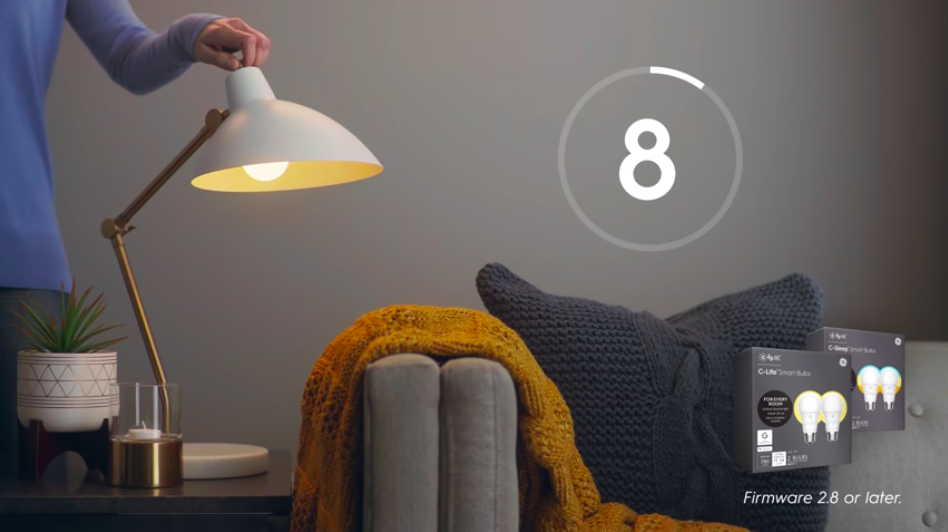Turn on the C by GE light bulb
Screen grab from How to: Reset C by GE Light Bulbs
[NARRATOR]
Welcome to C by GE’s smart tips.
We’re going to show you how to reset your C by GE bulbs, which will un-pair your bulb from other devices and apps that it’s connected to.
There are 2 factory reset processes which depend on the generation of bulbs and the firmware you’re running on.
Here’s the first process designed for bulbs with this package or for firmware version 2.8 or later.
Start with your bulb off for at least 5 seconds.
Then turn on the bulb for 8 seconds.
Turn off for 2 second.
Turn on for 8 seconds.
Turn off for 2 seconds.
Turn on for 8 seconds.
Turn off for 2 seconds.
Turn on for 8 seconds.
Turn off for 2 seconds.
Turn on for 8 seconds.
Turn off for 2 seconds.
And then turn it on one last time.
The bulb will flash on and off 3 times to show that the reset was successful. If it doesn’t, your bulb may be running on an older version of firmware and we’ll need to try the second factory reset process, which is designed for C by GE bulbs with this package or for firmware version 2.7 or or earlier.
Ready?
OK.
Start with your bulb off for at least 5 seconds.
Then, turn on the bulb for 8 seconds.
Turn off for 2 seconds.
Turn on for 2 seconds.
Turn off for 2 seconds.
Turn on for 2 seconds.
Turn off for 2 seconds.
Turn on for 2 seconds.
Turn off for 2 seconds.
Turn on for 8 seconds.
Turn off for 2 seconds.
Turn on for 8 seconds.
Turn off for 2 seconds, and then turn it on one last time.
The bulb will flash on and off 3 times if it has been successfully reset.
For more smart tips about our smart products, go to CbyGE.com.

